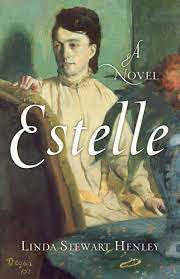
Estelle by Linda Stewart Henley
Edgar Degas’ Excellent New World Adventure
Review by Dr. Beverly Held
Once again a book has taken me down a rabbit hole of discovery. In a good way, of course, otherwise why take the journey. The book in question, the gateway drug so to speak, is a new book by a new author. Entitled Estelle, Linda Stewart Henley has written an historical novel about Edgar Degas and the five months he spent in New Orleans. (Figure 1) Remind you what an historical novel is ? Sure. Basically, historical novels reconstruct past events in a fictional context. The novel usually includes historical events and historical people. Often fictional people make references to or interact with real people and participate in real historical events. Authentic details are melangé/d with invented scenes and dialogue. A sense of time and place is conveyed through historically accurate details and references to historical fact. The current reigning queen of historical fiction is Hilary Mantel who seems to get into the ‘head’ of Cromwell so completely that you can’t help but think that, as someone (Heather) recently suggested to me, Mantel isn’t so much inventing dialogue, as channeling her protagonist. Mantel’s trilogy is about real people and real events. Gone with the Wind, another historical novel sets a cast of fictional characters into a sweeping historical narrative - the Civil War. D.L. Doctorow’s Ragtime combines real and fictional people who participate in real and fictional events.
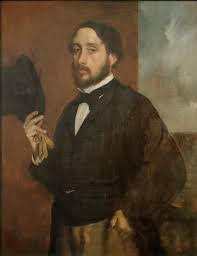
Figure 1. Edgar Degas. Self portrait, 1865
Some novelists have tried their hand at historical fiction involving artists, their sitters and their paintings. Amongst the most successful of these is Girl with the Pearl Earring (if you haven’t, you should see the film based upon it, Scarlett Johansson is fabulous as the girl, and the do it yourself ear piercing scene is not to be missed). Tracy Chevalier brings the artist, Johannes Vermeer and his still unidentified sitter to life. The ambiance of 17th century Delft, Holland as a character is beautifully recreated. Chevalier’s historical novel about the Unicorn Tapestries (at the Cluny Museum) is another effort to weave (pun intended) what is known about the tapestries (very little) into an intriguing tale filled with factual information about weaving in Brussels.
Of all the books mentioned above, none of the authors chose dual timelines to tell their tales. Henley’s book, which I will get to very soon, I promise, does. I have read books with dual timelines in the past. It is no easy feat to keep both (or more) narratives moving along and interesting enough that the reader doesn’t simply skip over one timeline to get back to the one that interests them more. One of my favorite multiple timeline books is by Martin Walker, currently of Bruno the Detective fame. His first foray into the Perigord, The Caves of Perigord has three timelines that he effortlessly weaves through the novel.
Historical novels are tricky and dual time lines are even trickier. Bravo to Henely for taking the plunge. Estelle is about two sets of characters, one contemporary, one historical, with a single setting, New Orleans. Each set of characters has a main cast and a subsidiary cast that acts as a foil for the primary cast and keeps the action rolling. For a new author, that seems like a lot of balls to have in the air at any one time.
Of the four sets of characters, only one set has any claim to historical fact and is the reason I am writing this review. The setting is, as I said, New Orleans. The historical tale takes place over a five month period from late October 1872 to late March 1873 when Edgar Degas visited his New Orleans family who conveniently all live in the same grand house on Esplanade Avenue (although we will learn when Edgar does, that the family rents rather than owns the house). That family consisted of his uncle Michel Musson and his uncle’s three daughters, Mathilde (with her husband and children), unmarried Desiree and Estelle (Figure 2) who is married to Rene, one of Edgar’s younger brothers. Achille, the third brother is the final member of the household, not counting maids and cooks. The Degas’ brothers mother was born in New Orleans and moved to France when she married Degas’ father. The three Musson daughters, Mathilde, Desiree and Estelle knew Edgar because they had stayed in Paris for a while during the American Civil War, a decade before our story begins. Beyond the Musson and De Gas/Degas clans, there is another figure who is a real person, America Durrive Olivier, (Figure 3) with whom we see Rene flirting whenever she shows up, which is with some regularity, to the chagrin of his wife Estelle who is pregnant during most of this tale. But Rene is French, they have mistresses, they keep getting their wives pregnant. (Figure 4) Don’t ask me how I know this, I just do.
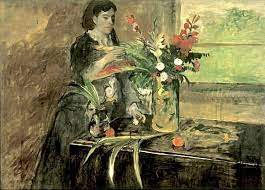
Figure 2. Estelle Musson De Gas arranging flowers, Edgar Degas, 1872-73
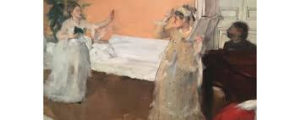
Figure 3. The Song Rehearsal (America Durrive Olivier & Estelle Musson De Gas, Edgar Degas, 1872-73
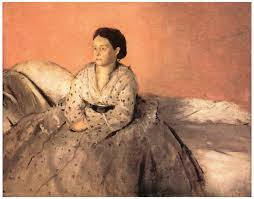
Figure 4. Estelle Müssen De Gas pregnant, Edgar Degas, 1872-73
Of course I knew that Degas had spent time in New Orleans, everybody knows that, well, maybe not everybody, but now you know it, so almost everybody. When Degas arrived in 1872, aged 38, and not yet famous, he planned to stay for 2 months. At the end of those two months, after drinking too much absinthe with his brothers at a Mardi Gras Ball (maybe, maybe not, remember this is historical fiction) he misses the train to take him to his boat for his transatlantic trip home. So, he returns to New Orleans and stays for another 3 months, the first three months of 1873. Were transatlantic boats like buses and metros back then ? No reservations ? Could you just not get on one and that was that ? Never mind, historic fiction, forget I asked.
Here are a few details in the book that I found particularly interesting, because they are harbingers of what was to come in Degas life and art. Besides reading the newspaper and checking for mail at his family’s office, Degas doesn’t have much to do, so Estelle encourages him to paint the family. He tries painting the children but they move around too much and he finds it distracting. (Figure 5) Yet, when he returned to Paris, motion would become his pre-occupation. He complains about the harsh white sunlight in New Orleans. Since his cousin Estelle is already blind in one eye and losing her sight in the other, worrying about his eye sight makes a lot of sense, I mean he was a painter. And maybe it explains why he never painted en plein air, he was doing all he could to protect his eyes. But his eyesight did eventually fail him and like Matisse and Monet, he found other ways to create. Matisse turned to cut outs and Monet’s work became more abstract. And Degas concentrated on statues and statuettes.
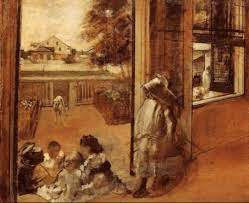
Figure 5. Musson Bell and Musson De Gas children, Edgar Degas, 1872-73
So, let’s talk a little more about Mardi Gras. As Degas prepares to leave New Orleans, his family is busy preparing for Mardi Gras, especially the costumes the men are going to wear. Rene has already described the masques he and Achilles brought home from France, (they had been in France, why I don’t know, and they had convinced their older brother Edgar to accompany them back home which is how the section about Degas opens). We are told that the carnival theme for the Comus Krewe for 1873 was Darwin’s Origin of Species. And after a little research, I I was able to confirm that, and I am quoting here, “In (1873) floats began to be constructed entirely in New Orleans instead of France, culminating with Comus' magnificent 'The Missing Links to Darwin's Origin of Species,' in which exotic paper-mache' animal costumes served as the basis for Comus to mock Darwin’s theory and local officials…” (https://www.mardigrasneworleans.com/history/). I didn’t pursue the tidbit about mocking Darwin but a southern town, French in origin, Catholic in religion, having a hard time with Darwin’s theories sounds about right to me.
As I mentioned at the beginning of this review, there is another historical family in this section of the book, however this one is completely fictional, neighbors of the Musson/DeGas household. The wife is a good friend to Estelle and her sisters, the husband is a middling artist with whom Edgar occasionally paints. But it is the young daughter, Marguerite, 18 years old, who has caught Edgar’s eye. Marguerite at the Mardi Gras ball is described as “wearing a silvery gown with a full skirt that fitted her slim figure perfectly. When she moved, the layers floated around her.” And then, to make sure we get the point, the author continues, “Marguerite looked like a dancer, exactly like the sketches (Estelle) had seen in (Edgar’s) notebook.” (p. 217). Some years later, Degas told the art dealer Ambroise Vollard, “People call me the painter of dancing girls, It has never occurred to them that my chief interest in dancers lies in rendering movement and painting pretty clothes.” I guess Degas got over his annoyance with movement, or maybe it was only really young children’s movements that disturbed him, not the movement of graceful girls, or race horses for that matter.
Eventually Degas got bored of painting the womenfolk on Esplanade Avenue and decided to paint his brothers and uncle, the cotton merchants, at their office. Called ‘A Cotton Office in New Orleans,’ (Figure 6) the painting depicts employees working and the two De Gas brothers lounging and reading while their uncle Michel Musson examines cotton samples. Degas exhibited the painting at the Impressionist Exhibition in Paris in 1876 and it was the first painting of his to be purchased by a museum.
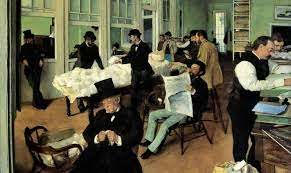
Degas was in New Orleans at a crucial time for both the city and his family. The French Creoles were being outmaneuvered by northern carpetbaggers, southern scalawags and emancipated blacks. “Reconstruction and the election of a black governor were beginning to create pressures that boiled over in a minor way during Mardi Gras in the year of Degas's visit and more seriously 19 months after his return to France. Members of the Musson household would become active in the notorious White League, which precipitated some of the violence.” https://movies2.nytimes.com/books/98/01/25/reviews/980125.25wilst.html
The Musson family racism was simultaneous with their financial decline. The patriarch Michel Musson had purchased Confederate bonds which were worthless at the end of the war and Rene had amassed considerable debt, but I am not sure how - profligate, I guess. Wives can be expensive, ditto mistresses. He overspent, he bankrupted his family. We are not going to talk about the black family line, the Rillieux family (Degas’ grandmother was a Rillieux), we’ll save that story for another time.
But it did send me down a rabbit hole, as these things do. I googled Degas and Racism, expecting to find something about Degas’ attitudes towards blacks, as one does. But race is race and instead I stumbled onto information that I must surely have known at one time but put aside and that is Degas’ anti-semitism. He may always have been a latent anti-semite, but it was latent, after all he was friends with Camille Pissaro. But that was before the Dreyfus Affair which pitted family and friends against each other as the country debated whether the Jewish Army officer Alfred Dreyfus had been wrongly or justly accused of treason. Zola wrote ‘J’accuse’ to defend Dreyfus. On the other hand, Degas’ anti-semitism was unleashed, “I detest them, those Jews!” he raged. “An abominable race that ought to be shut up in ghettos. Or even totally eradicated!” https://www.tabletmag.com/sections/arts-letters/articles/degas-and-the-dreyfus-affair. Gosh sounds like the ravings of a failed artist less than 40 years later. I have no problem finding evidence of Degas’ misogyny and railing against them. The evidence of it is in his work. Is the evidence of his anti-semitism as obvious ? No, of course it isn’t and that’s what makes all of this so difficult to navigate.
So what about the other half of this story? The half that takes place in New Orleans in the 1970s. It is about a young woman, Anne Gautier who inherits a house from her grandfather who is a descendant from the make-believe historical family, the Fontenots, who actually did own (rather than rent - but not really, they didn’t really exist) their house on Esplanade Avenue. To inherit it, she must renovate it and we learn a little about the mess that was New Orleans in the 1970s, the so-called urban renewal drive which tore down houses of poor blacks but didn’t replace them and so they were homeless while the city left standing equally decayed homes in less impoverished neighborhoods. Anne discovers a diary written by her ancestor Marguerite, of whom Edgar Degas had been so fond. Anne wants to be an artist but can only find a job in a museum. She has a boyfriend I wouldn’t let into my house let alone my bed, but never mind. Their ups and downs and a forged copy of Degas’ painting of Estelle keep the two stories connected. There is a nice little piece about the use of white paint in the house she is restoring, about how adding colors to white warms the white up just as it did in Degas’ dancers’ tutus. Further complicating Anne’s life is her half sister Stella, a child her mother had five years before Anne was born. The fruit of a liaison with a black artist, Stella was given up for adoption. Somehow she has found her way back to New Orleans, knows more about Anne’s family history than Anne does and wants a cut of Anne’s inheritance, after all it was her grandfather, too.
Reading a fictionalized account of Edgar Degas’ five months in New Orleans was interesting. I appreciate learning about his American family and the larger Creole community of New Orleans of the 1870s. New Orleans of 50 years ago, the 1970s, was less a draw for me, although it might interest you. The author put a human face on the problems of slum neighborhoods and gentrification in a story that has romance and intrigue aplenty to keep the story moving.
